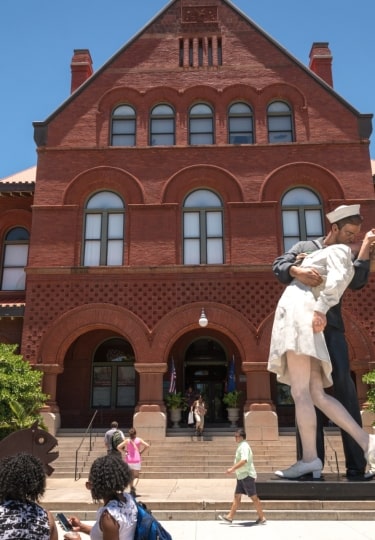Despite being a tiny island—it’s just two by four miles—there are plenty of fun and unique things to do in Key West. The southernmost city in the continental United States, just 90 miles north of Havana, Cuba, lives life on the edge.
The party culture of Key West is well known but there is an arty side to this town full of eccentrics, not to mention plenty of history. Homes to visit include those of Ernest Hemingway and President Truman. Then there are the beaches, the diving, the food, and the art scene. One thing’s for sure; you’ll never run out of fun things to do in Key West.
Visit the Little White House
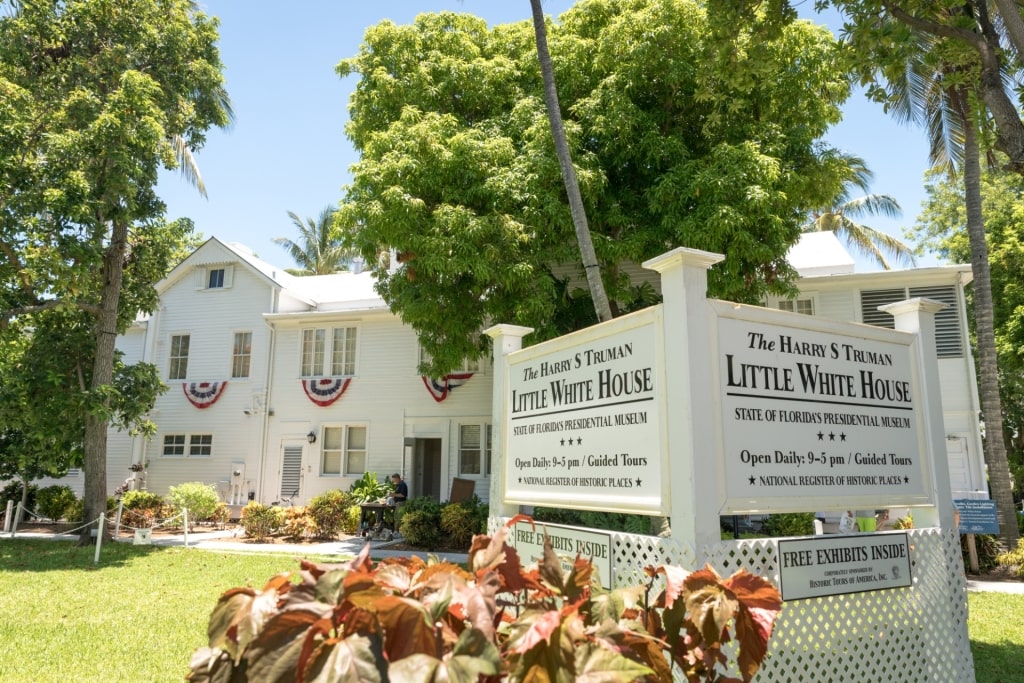
Little White House
President Harry S. Truman spent 175 days of his presidency in Key West and wished it were more. The “Little White House” he lived in was later visited by Presidents Eisenhower, Kennedy, and Carter.
The rooms are filled with period furnishings and exhibits marking historic events. Truman’s time in office, from 1945 to 1953, saw the start of the Cold War and the birth of the Civil Rights Movement.
Join a guided tour to see where major legislation was discussed and signed. Highlights include his favorite rocking chair and the table where he enjoyed playing poker.
Search for Sunken Treasures
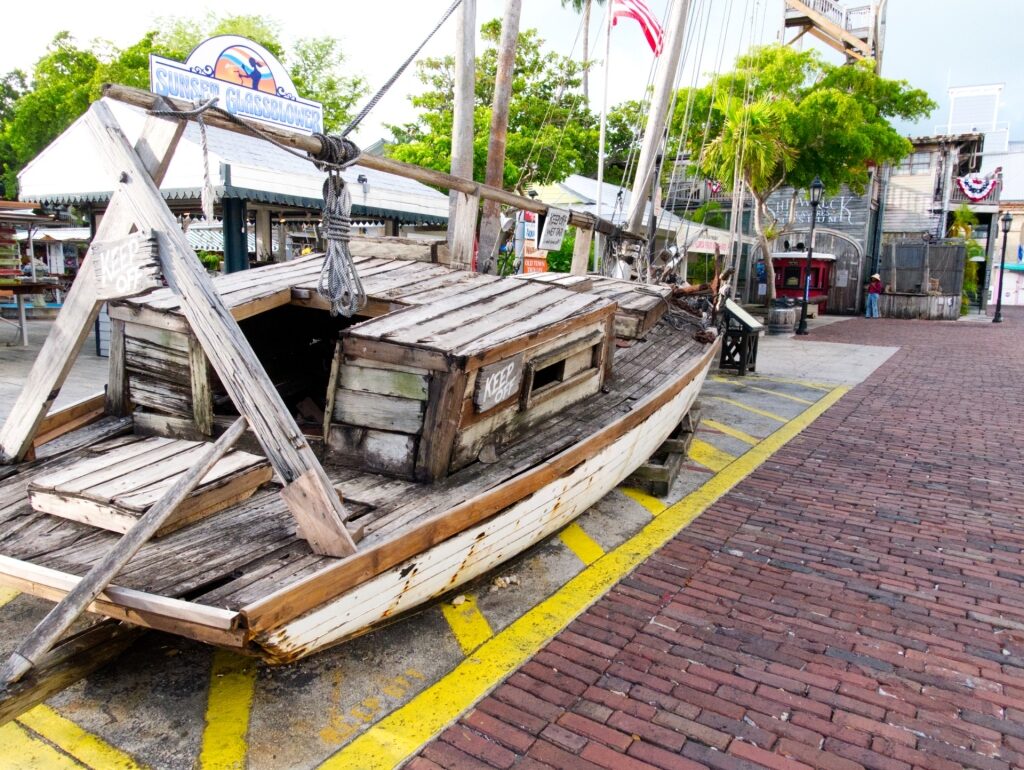
Shipwreck Museum
The Shipwreck Museum tells the story of the many vessels that came to grief on the Keys. Treasure from a Spanish galleon, valuable coins, and even the hull of an 1856 shipwreck, the Isaac Allerton, are on display.
Long before Key West was known as a laid-back party place, it was notorious for shipwrecks. In the 19th century, salvaging cargoes from sailing ships hitting the local reefs was a dangerous but very profitable trade.
Many of the salvage goods here come from the most famous of local salvagers, Asa Tift. In 1851, on the highest land in Key West, he built a luxurious home that is now the Ernest Hemingway House.
Come to Papa
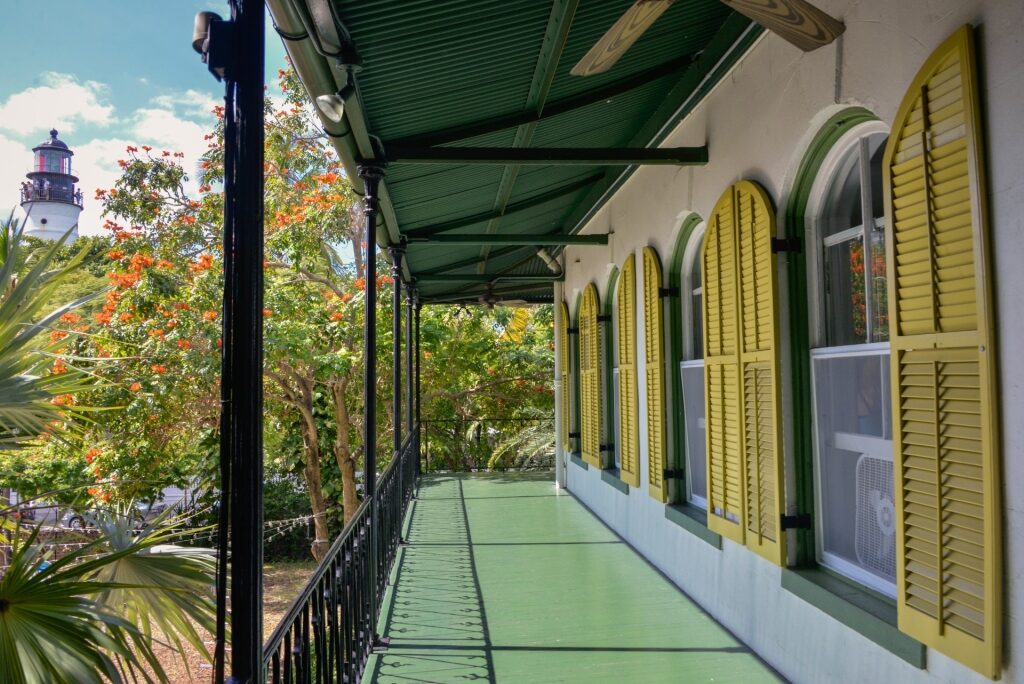
Ernest Hemingway House
One of the many unique things to do in Key West is to explore the life of one of the literary giants of the 20th century. Author Ernest “Papa” Hemingway lived in Key West in the 1930s. His lovely plantation-style home, originally built in 1851 for salvager Asa Tift, is now a National Historic Landmark.
Among the works he wrote here are Green Hills of Africa and the novel To Have and Have Not. His writing studio is preserved, as is the swimming pool with the embedded “Last Penny” he complained about spending on it.
The house is filled with antiques, hunting trophies, and other memorabilia. It’s also home to dozens of six-toed cats, descendants of his original pet, Snowball.
Start From Zero
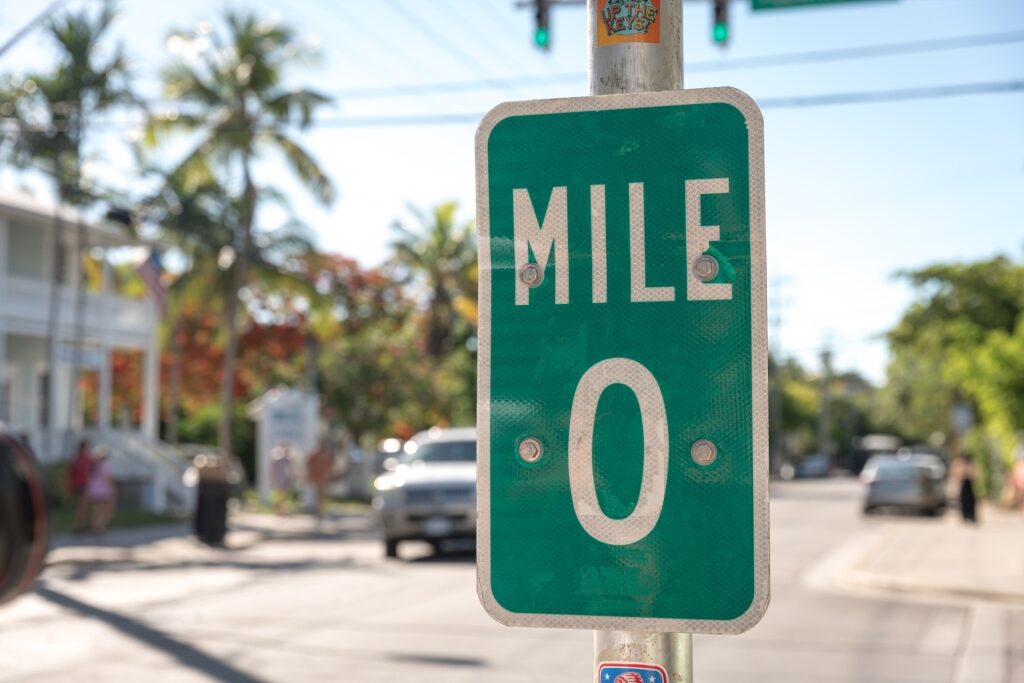
Mile Marker Zero Sign
How many of America’s many great highways have you been to the start of? At the corner of Fleming and Whitehead Street in Key West, you can stand at the very beginning of U.S. Route 1.
Seeing this Mile Marker Zero Sign is certainly a unique thing to do in Key West: there’s only one Route 1. From here, it’s 2,370 miles to its northern end in Fort Kent, Maine, on the border with Canada.
Route 1 is the longest highway in the United States, making for quite a road trip. If you ever decide to go, it runs through Miami, Richmond, Washington DC, Philadelphia, New York City, and Boston.
Look for Rick Worth’s Art
Artist Rick Worth moved to Key West in 1980 after leaving the US Navy. Since then, he has transformed the town like no one else.
You can see his bright, high-gloss work on murals everywhere, including Welcome to Key West at Mallory Square. He has also created more than 100 “art-o-mobile” painted vehicles to look out for.
Another first for him was painting old roof shingles. You’ll find these “candy bars” in many galleries and on display in the Truman Little White House.
Have a Rum & Cigar
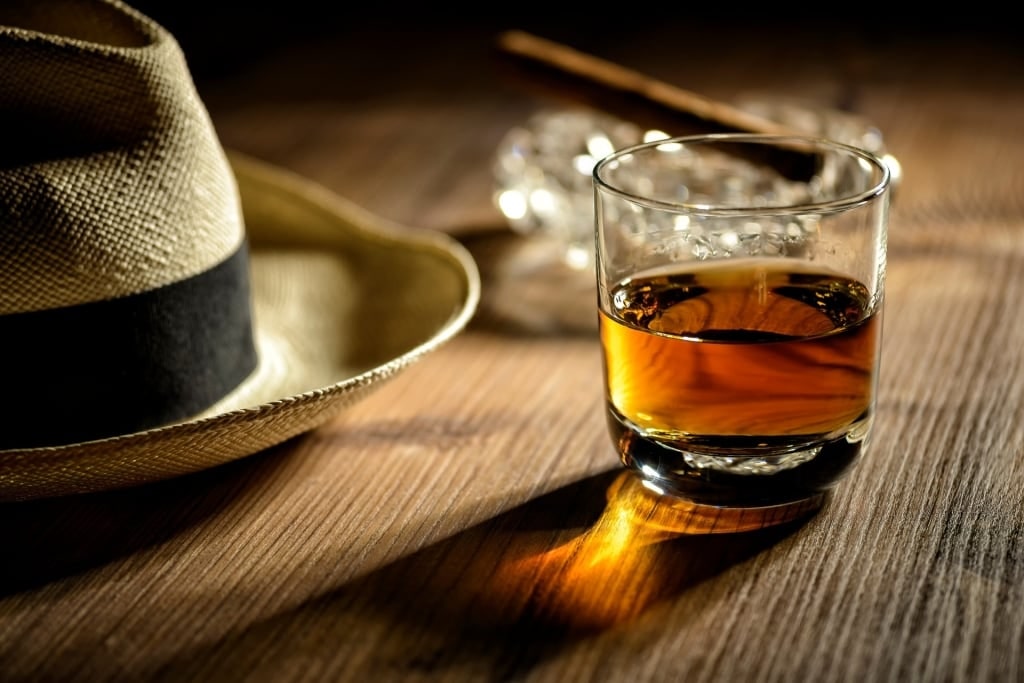
Rum
There are several food tours of Key West, but a livelier option is a rum and cigar tour. You can sample local rum and then sip Cuban coffee with a cigar.
The Hemingway Rum Company produces the award-winning Papa’s Pilar Rum. Distillery tours and the Tasting Bar let you see the whole rum-making process.
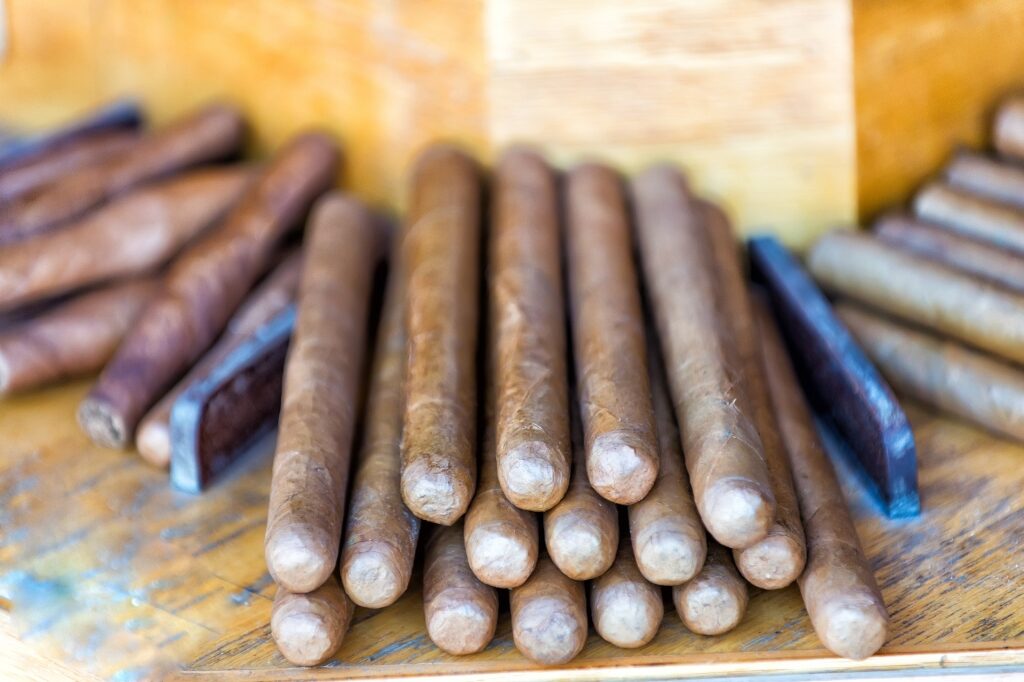
Cigar
Fleeing Cuba’s Revolution in 1968, some cigar makers moved their businesses here. However, the Rodriguez Cigar Factory predates that, being founded in 1947.
Visitors can learn to hand-roll a cigar then enjoy one as they learn more about cigar history. At one point, Key West was the largest producer of cigars in the United States.
Smooch at the Kissing Statue
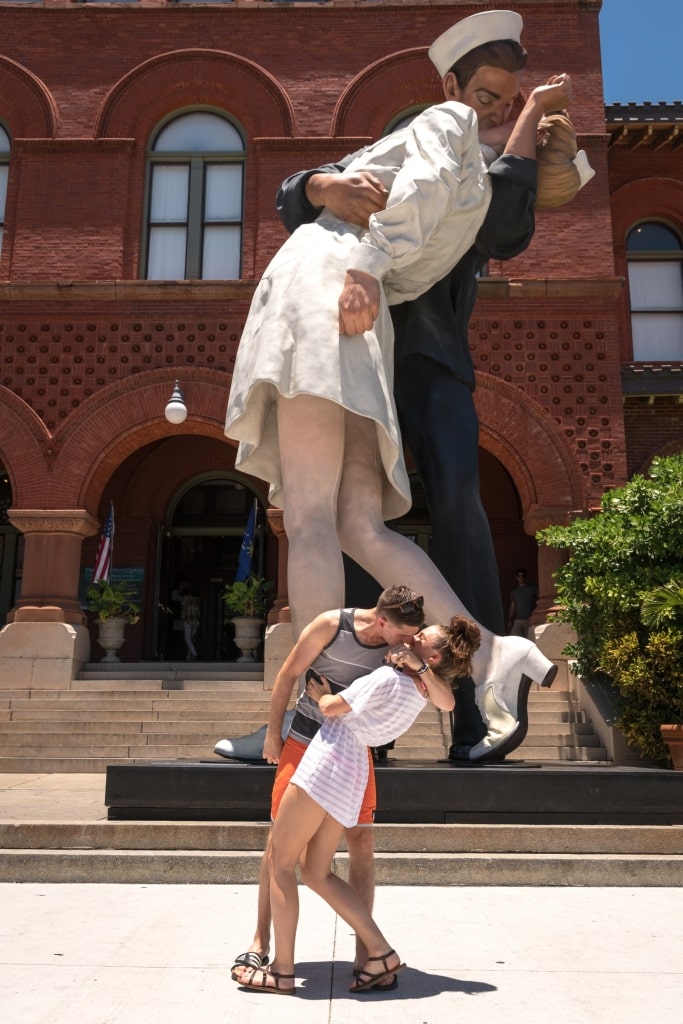
Kissing Statue
Unconditional Surrender is perhaps the most famous of many larger-than-life statues in Key West by artist Seward Johnson, who was part-heir to the Johnson & Johnson fortune. He later gave this sculpture near Mallory Square the punning name of Embracing Peace.
It’s artistically controversial for being computer generated from a famous photograph taken in Times Square in 1945. The image captures a sailor forcefully kissing a woman during celebrations for the end of WWII.
Critics called the late Johnson’s trompe-l’œil work “kitsch”, but he was also embraced as “America’s most popular sculptor”. Judge for yourself with this and his other pieces around Key West.
Read: Best Things to Do in Key West for Couples
Explore African-American Key West
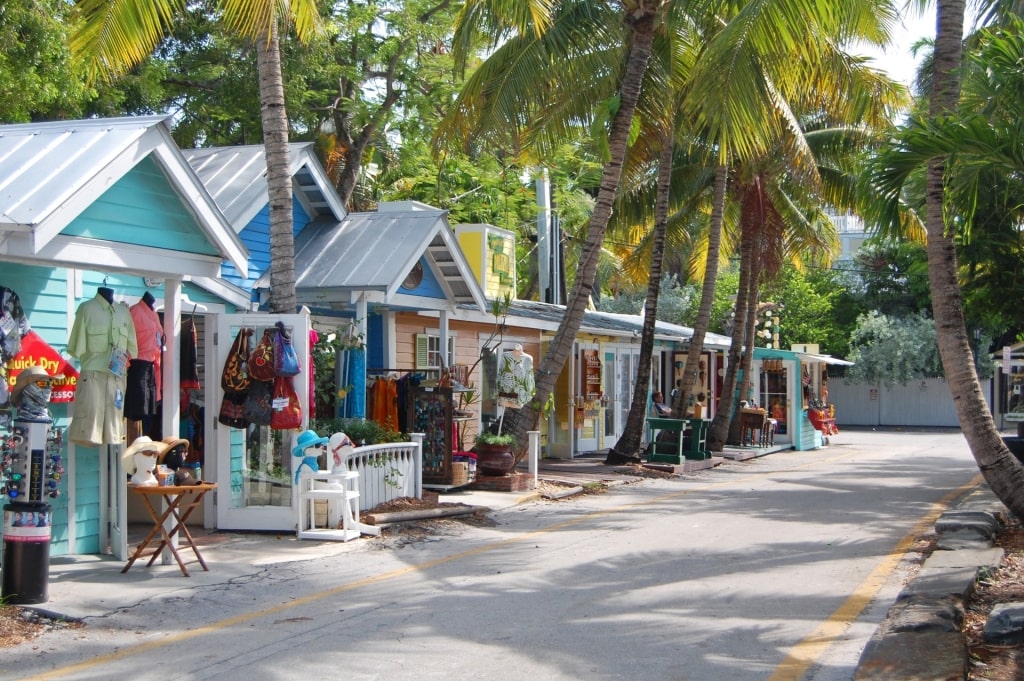
Bahama Village
As a Union Naval base during the Civil War of 1861–1865, Key West was a haven for enslaved people fleeing nearby states and the Bahamas. The Key West Cemetery has an African section with graves from the mid-1800s, when a quarter of the population was African-American.
Key West’s Bahama Village was founded by newly freed black people when the Civil War ended. Its shotgun-style houses and musical culture directly reflect these roots.
A Memorial on Higgs Beach stands over the graves of hundreds of Africans. Rescued in 1860 from three slave ships, they died of fever due to the conditions onboard.
Read: Best Beaches in Key West
Take a Sea Plane to the Dry Tortugas
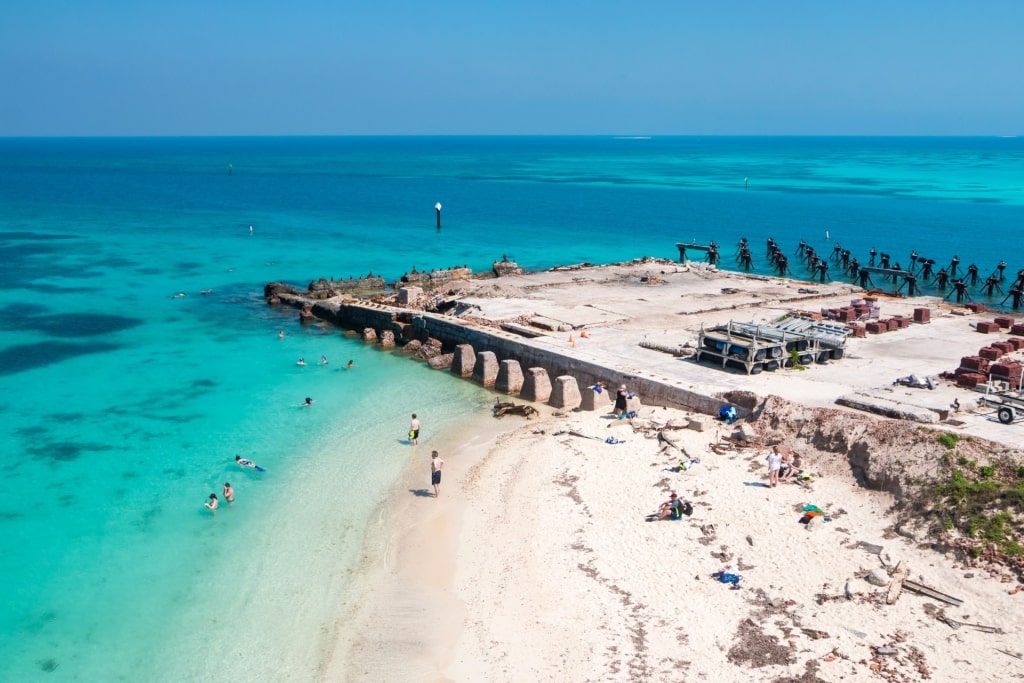
Dry Tortugas National Park
A flightseeing trip to Dry Tortugas is one of the most fun things to do in Key West. You’ll fly low over the beautiful Marquesa Islands and Boca Grande, where you could spot dolphins.
Dry Tortugas National Park is an untouched paradise, perfect for swimming, snorkeling, beachcombing, and birdwatching; some 281 species have been spotted here. The only air-conditioner on the island is in the park’s gift shop, making that a very popular stop.
You’ll also see Fort Jefferson, the largest masonry building in the western hemisphere. Built in the 1840s to control shipping, it was later a prison for Dr. Samuel Mudd, guilty of treason for tending to John Wilkes Booth’s broken leg after Booth had assassinated President Lincoln.
Discover the Audubon House
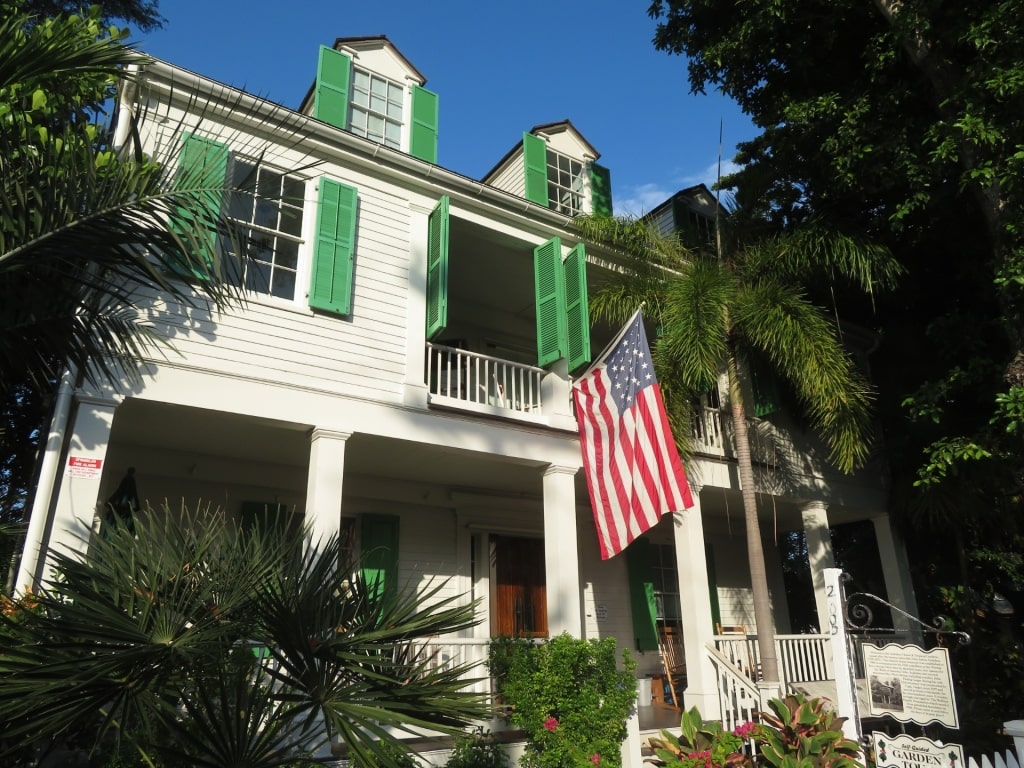
Audubon House Photo by Ken Lund on Flickr, licensed under CC BY-SA 2.0
The Audubon House & Tropical Gardens is dedicated to John James Audubon, the notable ornithologist. He visited Key West in 1832 and drew some illustrations for his monumental work, The Birds of America.
The house here was built in 1846 in a classic Key West “conch house” architectural style. Its curved wooden details, louvers and high pillars are the work of carpenters trained in shipbuilding.
Inside, you’ll find a treasure trove of first edition works by Audubon, including original prints. The tropical garden is rich with native vegetation including palms, orchids, and bromeliads.
Find Nancy’s Secret Garden
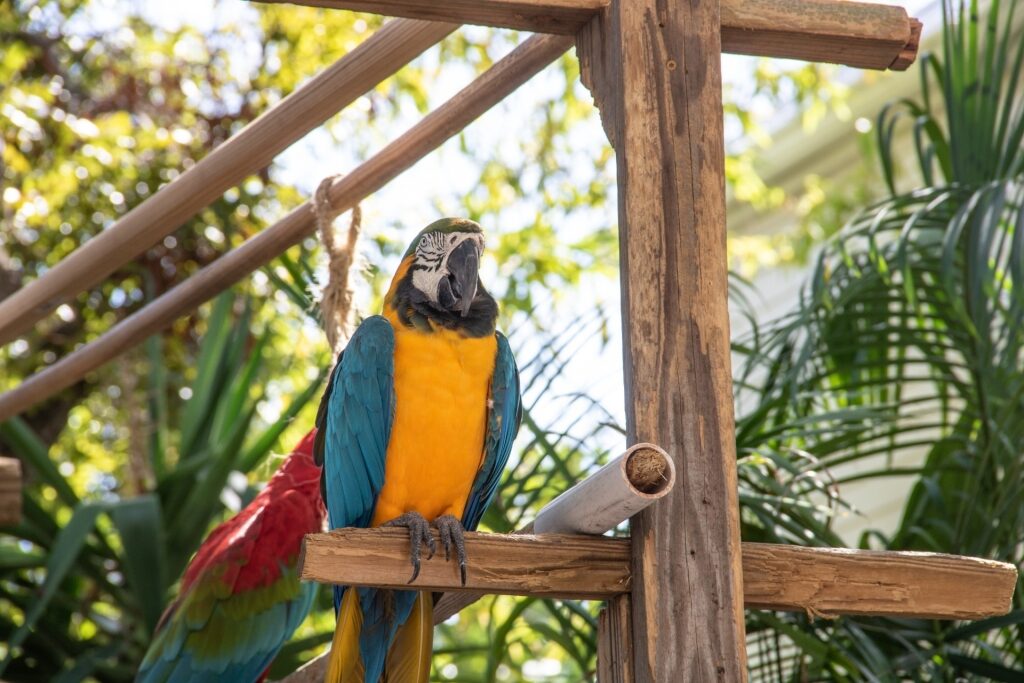
Macaw
Artist Nancy Forrester set up her “Secret Garden” to provide sanctuary for rescued parrots, mostly macaws. She shares their stories to highlight deeply felt messages about habitat loss and the pet trade.
As well as an artist, she is also an environmentalist. These two sides of her work come together in her lush green garden of both native and exotic plants.
Nancy is an entertaining guide to sustainable gardening practices, conservation, and the ecology of the Florida Keys. While she has many stories to tell, the memories you will come away with will be ones of hope and wonder.
Take a Bike
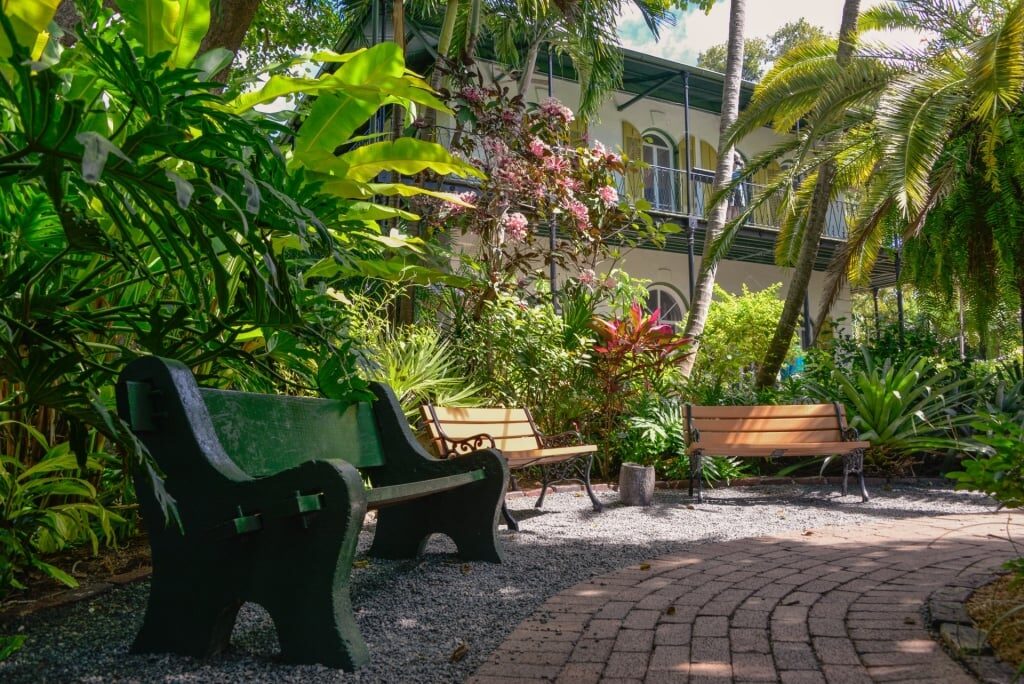
Ernest Hemingway House
One of the most fun things to do in Key West is a cycling tour, either with a guide or by yourself on a self-guided route. The small size of the island, not to mention its flatness, makes it perfect for exploring on two wheels.
These rides will usually include such highlights as the Ernest Hemingway Home, Key West Lighthouse, and The Southernmost Point. However, having a local guide will bring much more of the town and its stories to life.
Specialized tours can take in local architecture, notable gardens, or the best restaurants. There are also eco-tours that explore some of the island’s remaining natural heritage.
Hotfoot it to “The Mad House”
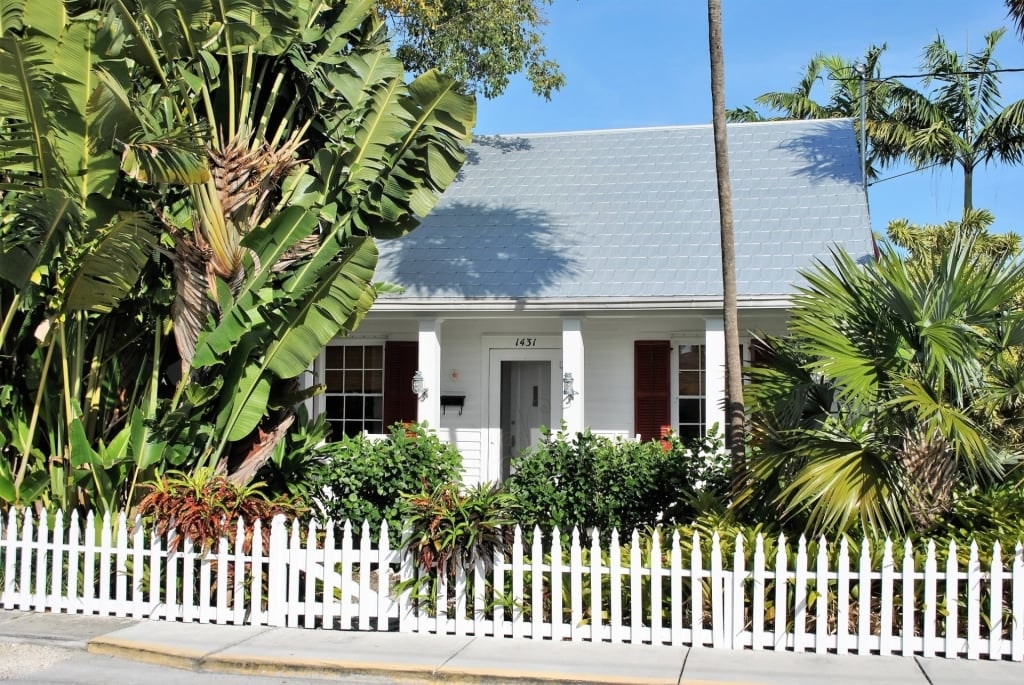
Tennessee Williams house Photo by Elisa.rolle on Wikimedia Commons, licensed under CC BY-SA 4.0
Another notable resident of Key West was playwright Tennessee Williams, who finished Cat on a Hot Tin Roof while staying here in 1941. In 1949, he bought a “conch house” at 1431 Duncan Street, where he lived until his death in 1983.
A small museum on 513 Truman Avenue has a recreation of the studio he called “The Mad House”. It holds his typewriter, some artwork, books, and other fascinating personal effects.
Williams came here just after the Overseas Highway was finished, becoming one of a group of writers who helped put Key West on the bohemian map. Others included Hemingway, of course, as well as Robert Frost, and Hunter S. Thompson.
Check Out the Fun at 801
There are many bars in Key West, but few match the 801 Bourbon Bar for atmosphere. Famous for its outrageous “801 Girls” drag shows, it’s probably the town’s most popular LGBTQ+ bar.
You can’t miss the vivid pink—what else?—building at 801 Duval Street, where the bar is open from 10am to 4am every day. Inside, the ground floor looks like almost any other bar, albeit one with sushi, karaoke, and bingo.
Upstairs is the crowded 801 Cabaret, most notable for that adults-only drag show, among other events. Be warned, don’t sit in the front row unless you want to be part of the entertainment.
Be Spooked by a Haunted Doll
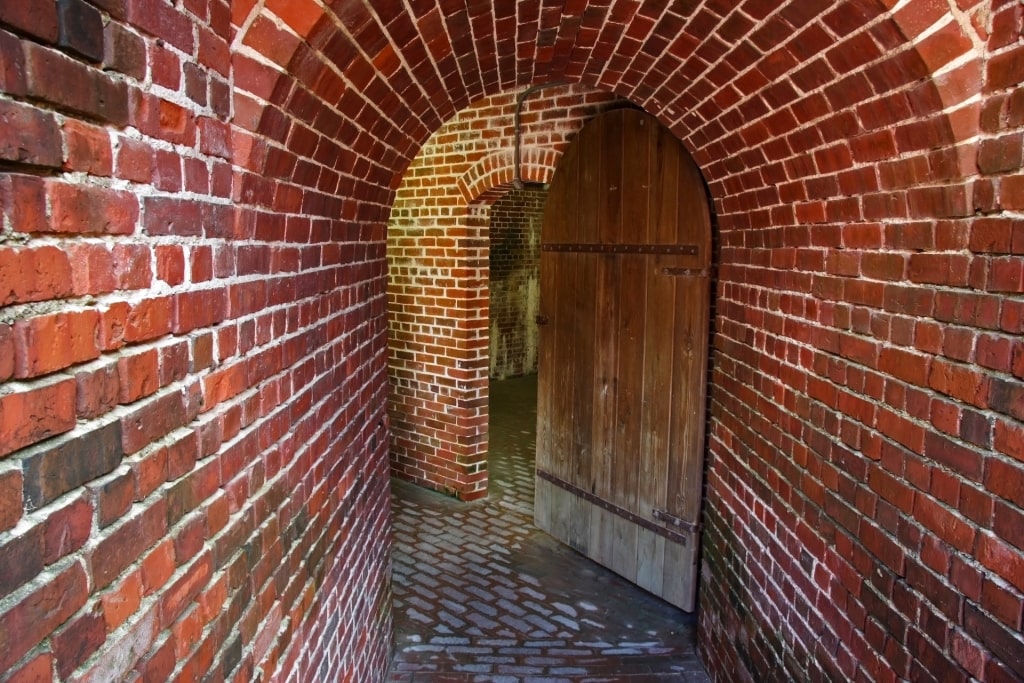
Fort East Martello
The historic Fort East Martello, now a museum, dates back to the US Civil War. It was built in 1862, with eight-foot thick granite walls and a three-story central tower.
In the 1950s, the building became a museum dedicated to Key West and the Keys generally. It covers everything from military history to Cuban culture and local art.
Among the art is painted woodwork by folk artist Mario Sanchez, while the lovely garden holds concrete sculptures by Stanley Papio.
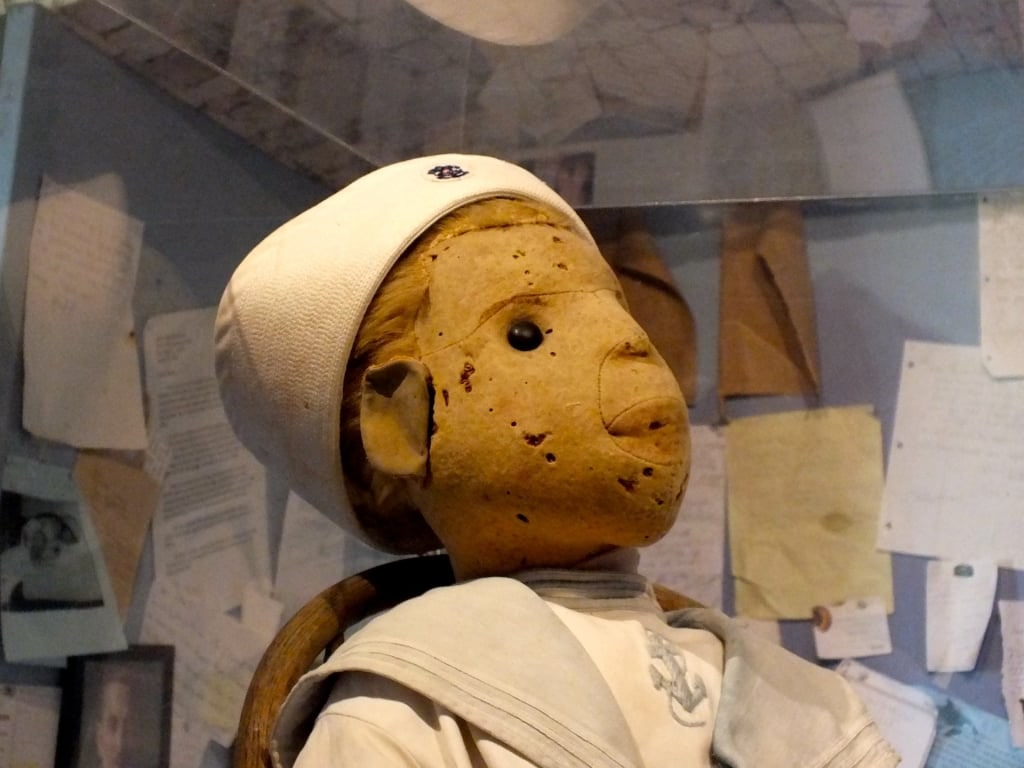
Robert doll Photo by Cayobo on Flickr, licensed under CC BY 2.0
A famous doll, named Robert and originally belonging to Key West artist Robert Eugene Otto, is another highlight. Locals believe the doll to be possessed or cursed by voodoo, able to move, change its expression, and even speak.
Visitors report their cameras malfunctioning when they try to photograph it. Needless to say, these stories of ghostly goings on bring even more visitors to see the doll.
Pay Your Respects at the Rooster Cemetery
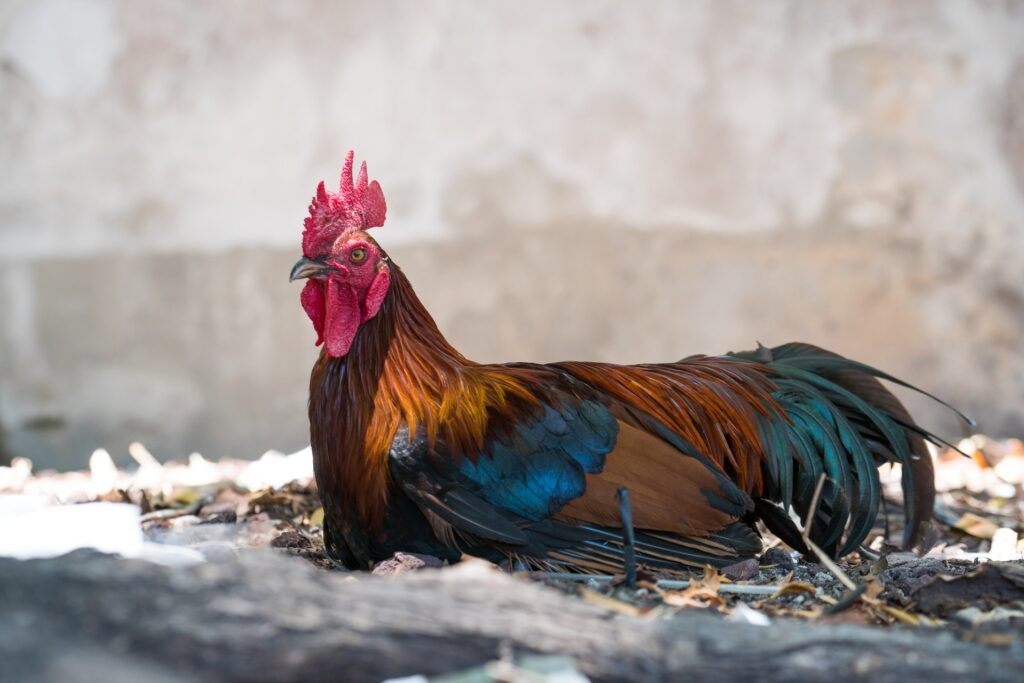
Rooster
The chickens that roam around Key West are very much a part of local life. So much so that they even have their own cemetery.
You’ll find the Rooster Cemetery in the outside dining area of the Blue Heaven Restaurant in the Bahama Village. Once a bordello, this is also where Ernest Hemingway refereed boxing matches.
The “cemetery” is dedicated to a number of roosters, each with their own grave marker and often humorous epitaph. Some living chickens roam the restaurant grounds, adding to the typically eccentric Key West atmosphere.
Hang out in Books & Books
There is nothing like an independent bookstore for revealing the heart of a community. Books & Books in Key West is made even more special by the regular presence of co-owner Judy Blume, the children’s and young adults’ author.
Sitting in the historic Masonic Temple at 533 Eaton Street, the store concentrates on Florida authors. You’ll also find a great selection of books about the Keys and Key West in particular.
Naturally, this is also a great place to find books autographed by Judy Blume. As a community hub, there are also regular events supporting other local writers and artists.
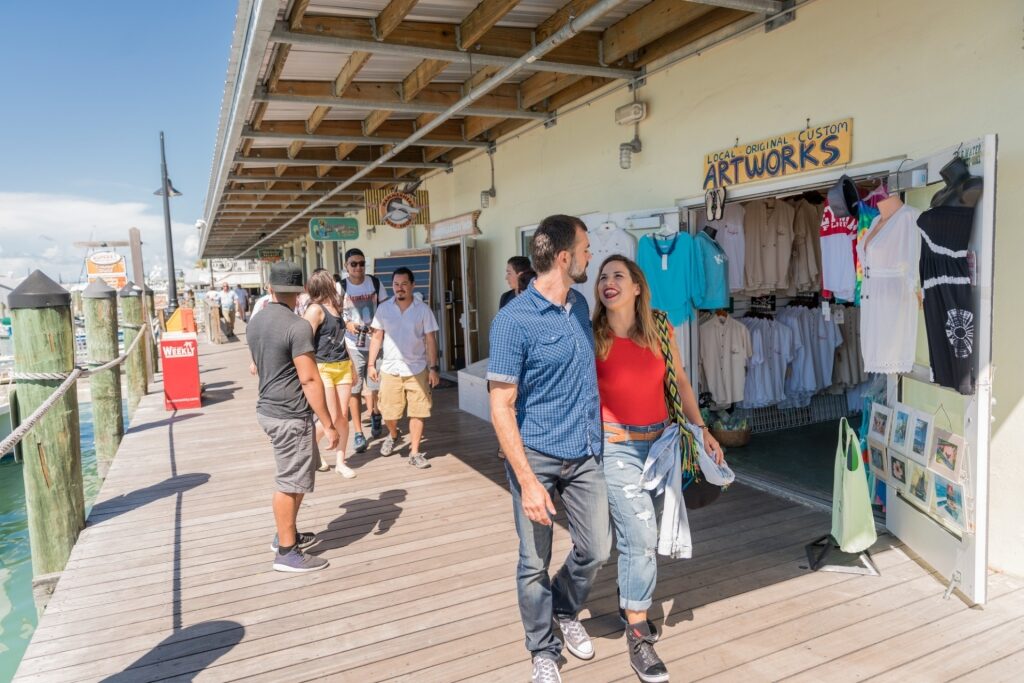
Key West waterfront
Are you tempted to discover this quirky destination for yourself? Browse our Key West cruises to find the perfect tropical vacation.
